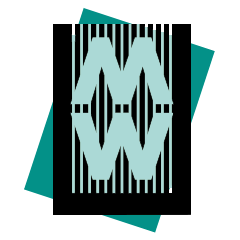GLAMi nomination: Ai Weiwei 360
institution: Royal Academy of Arts, London
category: Exhibition and Collection Extension
http://roy.ac/aiweiwei360
If you’re lucky enough to work in an art gallery or museum, you might have had the experience of walking around quiet galleries, before or after hours; perhaps with a curator, guide or artist giving you an insider’s guide to the show.
Ai Weiwei 360 was our attempt to put together a lasting, digital experience which replicated something of that insiders’ tour. We used digital technology to record the exhibition, layering in many hours of additional, non-linear video content. We built a digital framework that allowed users to explore at their own pace and to their own preferred detail level, and so managed to bring the experience to many more people than could visit the show physically and made this experience available for more than a year after the physical exhibition ended.
 The context
The context
The Royal Academy of Arts is a large art gallery in central London. We’re an institution founded and still run today by practising artists, and our main business is putting on temporary exhibitions made up of loaned works from around the world. These shows take years of planning, with huge numbers of artworks shipped in, installed, visited, and then taken down after three months or so.
Chinese artist and activist Ai Weiwei’s show at the Royal Academy was a big hit: 5-star reviews from every media outlet; the buzz generated by the return of his passport by the Chinese authorities; and of course the artwork itself. Demand for the show outstripped supply: we opened for 56 hours straight over the final weekend.
The challenge
This seemed like the ideal show to experiment with: the installation-like nature of many of the pieces, the emphasis on beautiful and unusual materials, and the many layers of meaning knitted into Ai Weiwei’s work. We had decided to build a multimedia guide into the price of the exhibition ticket for just this reason, which was extremely well-received. Could we also offer a full 360º immersive experience that viewers were free to explore at their own pace and in any order they chose? Something accessible from desktops, tablets, smartphones or even virtual reality headsets – something which would allow a wider, more international audience to experience this show after the three-month life of the exhibition?
We worked with The Space, a publicly-funded body in the UK who support arts organisations with digital projects, to develop the idea of Ai Weiwei 360, which was produced by Animal Vegetable Mineral productions; Fish in a Bottle built the digital product and interaction design.
The relatively new-fangled VR framework (along with the ever-so-slightly older-fangled streetview-style tour) also provides a framework for some more classic TV-documentary-style video segments. We spent a long time filming new content and combing through archive and additional footage. The aim was twofold: to get viewers really close to the materials and objects that the artist used; and to open up some of the artist’s allusions, references and inspirations.
Response
Launching the online experience just after the closure of the exhibition, we were lucky to get some good media coverage, including a spot in the BBC’s ‘Taster’ section of new digital media products in beta, where we became one of the most shared projects. Over 180,000 users visited the online exhibition while it was on, with an average session duration of over 8mins. Tagging actions within the experience allowed us to view user behaviour in Google Analytics and make subtle changes to the introduction and orientation to make it easier to use.
User feedback on email or social media was also generally positive – and it seemed to resonate both with our loyal audiences (members) and with totally new audiences (for example, people with access issues who couldn’t visit the show).




And perhaps the best moment was seeing the artist himself reflect on how it might affect his practice in future…
 Ai Weiwei 360 was a great learning experience for us on how to run a project of this kind, that cuts across our organisational capabilities. And since creating this project a year ago, the prevalence of VR and the cost/speed of production has changed hugely. So, it’s given us food for thought on how we might want to experiment in future: not every temporary exhibition would lend itself to this level of digital reimagination; but we’re certainly taking lessons from the project into other areas of our work.
Ai Weiwei 360 was a great learning experience for us on how to run a project of this kind, that cuts across our organisational capabilities. And since creating this project a year ago, the prevalence of VR and the cost/speed of production has changed hugely. So, it’s given us food for thought on how we might want to experiment in future: not every temporary exhibition would lend itself to this level of digital reimagination; but we’re certainly taking lessons from the project into other areas of our work.
Enjoy the experience yourself at http://roy.ac/aiweiwei360
